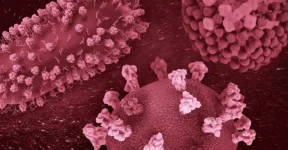(Press-News.org) Houston, TX – Degeneration of myelin, an insulating sheath required for rapid communication between nerve cells, and neuroinflammation are notable hallmarks of Multiple Sclerosis (MS) and related neurodegenerative disorders such as Alzheimer’s disease or Huntington’s disease that affect roughly 2.8 million people in the world. However, little is known about the precise molecular steps by which demyelination leads to the loss of neurons and glia, the two major types of brain cells.
A paper published recently in Cell Metabolism by a research team led by Drs. Hugo J. Bellen, Hyunglok Chung, and Hyun Kyoung Lee at the Jan and Dan Duncan Neurological Research Institute (Duncan NRI) at Texas Children’s Hospital and Baylor College of Medicine, reveals an answer to this longstanding question. The researchers discovered that myelin breakdown results in an accumulation of Very Long-Chain Fatty Acids (VLCFA) and their intermediates which triggers an autoimmune response that damages the brain cells. Furthermore, they showed that reducing the levels of VLCFA and S1P using known drugs, Bezafibrate and Fingolimod, had a synergistic beneficial effect on the MS pathologies in an animal model, revealing an even more effective treatment for MS patients.
Elevated levels of S1P are toxic to fly glia and neurons
A previous study from the Bellen lab showed that the loss of the fly version of the dACOX1 gene reduced the lifespan, caused neuronal and motor dysfunction, and eventually resulted in the demise of neurons and glia. The ACOX1 gene encodes an enzyme required for the breakdown of VLCFA. In this study, the researchers set out to understand the exact molecular steps by which the absence of dACOX1 results in the loss of neurons and glia.
VLFCA are a rare group of fatty acids that comprise only a tiny fraction of the total fatty acids in the body. Myelin sheaths that surround the nerve membranes are a rich source of VLCFAs and have roughly 10-fold higher levels of VLCFA-ceramides than other cellular membranes. VLCFA are produced from long-chain fatty acids by ELOVL Fatty Acid Elongase enzyme and converted back by the ACOX1 enzyme.
Dr. Chung, a former postdoctoral fellow in the Bellen lab who is also the first and co-corresponding author of this study, found that the toxic effects observed due to the loss of dACOX1 could be suppressed by knocking down the gene that encodes ELOVL with Bezafibrate, a lipid-lowering drug. These observations further supported their earlier observations that excess VLCFA is harmful to nerve cells.
Dr. Chung and colleagues next assessed how increased levels of VLCFA in the glia affected the metabolism of other lipids. They performed a mass spectrometric analysis of 26 lipids obtained from adult fly heads that lacked the fly version of the ACOX1 gene. They found two lipid intermediates - Very Long ceramides(VL-Ceramides) and Sphingosine-1-phosphate (S1P) - were significantly higher in the glia of these flies.
Further studies revealed that excess glial S1P was transported to the neurons and this increase in S1P levels was detrimental to the survival of both glia and neurons and was sufficient to cause these cells to malfunction and degenerate. Notably, they found that supplementing dACOX1 mutant flies with Fingolimod, an MS drug known to bind and downregulate S1P receptors levels, led to dramatic improvements in the overall viability, neuronal function, and importantly, delayed neurodegeneration in these flies.
Together, their data provide compelling evidence that the accumulation of S1P, a key product of VLCFA catabolism, is the root cause for the demise of glia and neurons in dACOX1 mutants.
S1P triggers strong immune responses that destroy brain cells in flies
The strong suppression of neurodegenerative symptoms in dACOX1 mutant flies by Fingolimod, a drug that is used to treat MS, an autoimmune disorder, promoted Dr. Chung to explore if elevated VLCFA had any impact on immune responses.
Intriguingly, he observed that flies lacking ACOX1 had several large black, melanotic masses throughout their body including the head, eye, wing margins, and abdomen. Typically, melanization is an immediate immune reaction deployed in arthropods like flies when they are attacked by pathogens and parasites. However, the presence of melanotic masses in these flies suggested that the absence of dACOX1 induces an autoimmune response whereby the immune cells misinterpret the presence of an innocuous molecule as a sign of a cellular invasion and mount an unwarranted attack that destroys their own cells.
They next asked if the loss of dACOX1 also activated other immune pathways.
Flies have two major immune pathways – the Toll and the immune deficiency (Imd) pathways – that control inducible immune responses to invading bacteria and fungi by systemic production of cytokines, and antimicrobial peptides (AMPs) upon activation of the nuclear factor-kB (NF-kB).
Notably, the authors found that elevated S1P in fly glia activates NF-kB which in turn significantly increased the transcript levels of several AMP genes involved in the IMD pathway. Moreover, circulating immune cells are recruited to the central nervous system.
“This is the first time this immune pathway has been shown to lead to neuroinflammation in adult fruit flies,” said Dr. Bellen, a Baylor professor.
Bezafibrate and Fingolimod ameliorate the progression of MS symptoms in mice
Excited by these findings, the team then explored the role of elevated VLCFA and S1P in MS progression in vertebrates by collaborating with Dr. Hyun Kyoung Lee, associate professor at Baylor and investigator at the Duncan NRI. The most commonly studied vertebrate model to study MS is the experimental autoimmune encephalomyelitis (EAE) wherein the mice are injected with myelin to induce MS-like pathology and immune responses.
First, a postdoctoral fellow in the Lee lab and co-first author, Dr. Qi Ye, found that pre-symptomatic treatment of these mice with Bezafibrate, a lipid-lowering drug that inhibits the synthesis of VLCFA, slowed the progression of EAE pathology by reducing demyelination, neuronal damage, and infiltration of immune cells into the brain. These results showed that this drug can slow the progression of this debilitating disorder.
She next tested the potential therapeutic effect of lowering VLCFA and S1P on MS. “When we administered Bezafibrate along with Fingolimod at the onset of symptoms, we saw a synergistic improvement in EAE-induced paralysis and motor performance, demyelination and neuronal loss. The combined effects of these drugs were significantly better than the effect of either drug alone in every parameter we tested – suggesting that a combined therapy will be more effective and offer better outcomes for MS patients,” Dr. Chung added.
“We are very excited by the potential clinical implications of this study in not just how we treat MS patients but also for other neurodegenerative conditions that are associated with demyelination, disruptions in lipid metabolism, and neuroinflammation,” Dr. Bellen said.
Dr. Chung plans to further explore the transport mechanism of S1P in his new role as an assistant professor in the department of Neurology at Houston Methodist.
Others involved in the study were Qi Ye, Ye-Jin Park, Zhongyuan Zuo, Jung-Wan Mok, Oguz Kanca, Sudhir Gopal Tattikota, Shenzhao Lu, Nobert Perrimon, and Hyun Kyoung Lee. Their institutional affiliations can be found here. The study was funded by the National Institutes of Health, the Jan and Dan Duncan Neurological Institute at Texas Children’s Hospital, BCM IDDRC, Warren Alpert Foundation, and others.
END
Study reveals a novel biomarker and a potentially improved therapy for Multiple Sclerosis and related neurodegenerative disorders
New research finds Sphingosine 1-Phosphate produced by the degradation of myelin results in neuroinflammation and drugs that reduce its level can reverse pathologies in animal models of MS.
2023-04-20
ELSE PRESS RELEASES FROM THIS DATE:
Dr. Elizabeth Whitlock to be honored at #AGS23 for her cross-cutting work in geriatrics, anesthesiology, and epidemiology
2023-04-20
New York, NY (April 20, 2023) — The American Geriatrics Society (AGS) and the AGS Health in Aging Foundation today announced that Elizabeth L. Whitlock, MD, an Assistant Professor in the Department of Anesthesia and Perioperative Care at the University of California, San Francisco (UCSF) is the 2023 recipient of the Jeffrey H. Silverstein Memorial Award for Emerging Investigators in the Surgical and Related Medical Specialties.
The award will be presented at the 2023 AGS Annual Scientific Meeting (#AGS23) which is being held in Long Beach, CA from May 4-6 (preconference day is May 3). The award recognizes Dr. ...
Extraction influences seismicity at some hydraulic fracturing sites in Ohio
2023-04-20
A decade’s worth of research at oil and gas operations in the central and eastern United States has confirmed that fluid injection from hydraulic fracturing and wastewater disposal can induce seismicity.
Now, data from hydraulic fracturing wells in eastern Ohio indicate that extraction activities also can influence the seismicity rate, according to a presentation at the Seismological Society of America (SSA)’s 2023 Annual Meeting.
During hydraulic fracturing, well operators inject a pressurized liquid ...
Cheetahs need more space: Reintroduction in India must consider their spatial ecology
2023-04-20
In autumn 2022 and winter 2023, a total of 20 cheetahs from Namibia and South Africa were introduced to Kuno National Park in India to establish a free-ranging population – for the first time since their extinction in India 70 years ago. Although the idea may be commendable, getting it right is not so easy. Scientists of the Cheetah Research Project of Leibniz-IZW in Namibia see shortcomings in the reintroduction plan: In southern Africa, cheetahs live in a stable socio-spatial system with widely spread territories and densities ...
From pathogens to fads: Interacting contagions
2023-04-20
APRIL 20, 2023
Most people think of a disease outbreak when they hear the word “contagion.” But it’s a concept that extends beyond pathogens. It could be an infectious disease, a fad, an online meme, or even a positive behavior in a population.
“From the mathematical perspective, a contagion is just a thing that spreads,” says Laurent Hébert-Dufresne, a former SFI Postdoctoral Fellow, now an associate professor in computer science at the University of Vermont.
April 19–21, Hébert-Dufresne and Juniper Lovato, ...
Beaver ponds with deeper sediments store more nitrogen, simple mapping reveals
2023-04-20
American Geophysical Union
20 April 2023
AGU Release No. 23-18
For Immediate Release
This press release and accompanying multimedia are available online at:
https://news.agu.org/press-release/beaver-ponds-with-more-sediments-store-more-nitrogen-simple-mapping-reveals/
Beaver ponds with deeper sediments store more nitrogen, simple mapping reveals
Simple mapping of beaver ponds can help land managers and conservationists in the West detect which ponds are sponging up nitrogen and which are releasing it
AGU press contact:
Rebecca Dzombak, +1 (202) 777-7492, news@agu.org (UTC-4 hours)
Contact information for the researchers:
Desneiges ...
New drug may help prevent migraine for difficult cases
2023-04-20
EMBARGOED FOR RELEASE UNTIL 4 P.M. ET, THURSDAY, APRIL 20, 2023
MINNEAPOLIS – The drug atogepant may help prevent migraines for people who have had no success with other preventive drugs, according to a preliminary study released April 20, 2023, which will be presented at the American Academy of Neurology’s 75th Annual Meeting being held in person in Boston and live online from April 22-27, 2023. The study involved people with episodic migraine, which is defined as having up to 14 headache days per month with migraine ...
ChatGPT is still no match for humans when it comes to accounting
2023-04-20
Last month, OpenAI launched its newest AI chatbot product, GPT-4. According to the folks at OpenAI, the bot, which uses machine learning to generate natural language text, passed the bar exam with a score in the 90th percentile, passed 13 of 15 AP exams and got a nearly perfect score on the GRE Verbal test.
Inquiring minds at BYU and 186 other universities wanted to know how OpenAI’s tech would fare on accounting exams. So, they put the original version, ChatGPT, to the test. The researchers ...
Researchers reveal a map to study novel form of cell-to-cell communication
2023-04-20
An international team led by researchers at Baylor College of Medicine with the National Institutes of Health Extracellular RNA Communication Consortium and the Bogdan Mateescu laboratory at the ETH Zürich and University of Zürich has developed a new powerful resource to study extracellular RNA (exRNA), a novel form of cell-to-cell communication. The study, published in the journal Cell Genomics, lays the foundation to examine how exRNA and its carrier proteins found in bodily fluids function in a healthy as well as a diseased setting, potentially providing a means to accurately implement early ...
ORNL’s Lupini elected fellow of the Microscopy Society of America
2023-04-20
Andrew Lupini, a scientist and inventor at the Department of Energy’s Oak Ridge National Laboratory, has been elected Fellow of the Microscopy Society of America.
MSA fellows are senior distinguished members who have made significant contributions to the advancement of microscopy and microanalysis through scientific achievement and service to the scientific community and the society. Lupini was one of only four scientists named an MSA Fellow this year.
Lupini was cited “for foundational contribution of theory and practice ...
Purdue Ventures invests in antibody-based cancer therapeutics company
2023-04-20
WEST LAFAYETTE, Ind. – Purdue Ventures, which manages three funds to support Purdue University-connected startups, has invested $250,000 in TRIO Pharmaceuticals Inc., a cancer immunotherapeutics startup founded by a Purdue University biophysics and structural biology alumnus. The company’s antibody-based therapeutics strengthens the body’s defense, the immune system, to eradicate cancer.
Purdue Ventures’ investment is part of a larger $2.2 million series seed-funding ...
LAST 30 PRESS RELEASES:
Injectable breast ‘implant’ offers alternative to traditional surgeries
Neuroscientists devise formulas to measure multilingualism
New prostate cancer trial seeks to reduce toxicity without sacrificing efficacy
Geometry shapes life
A CRISPR screen reveals many previously unrecognized genes required for brain development and a new neurodevelopmental disorder
Hot flush treatment has anti-breast cancer activity, study finds
Securing AI systems against growing cybersecurity threats
Longest observation of an active solar region
Why nail-biting, procrastination and other self-sabotaging behaviors are rooted in survival instincts
Regional variations in mechanical properties of porcine leptomeninges
Artificial empathy in therapy and healthcare: advancements in interpersonal interaction technologies
Why some brains switch gears more efficiently than others
UVA’s Jundong Li wins ICDM’S 2025 Tao Li Award for data mining, machine learning
UVA’s low-power, high-performance computer power player Mircea Stan earns National Academy of Inventors fellowship
Not playing by the rules: USU researcher explores filamentous algae dynamics in rivers
Do our body clocks influence our risk of dementia?
Anthropologists offer new evidence of bipedalism in long-debated fossil discovery
Safer receipt paper from wood
Dosage-sensitive genes suggest no whole-genome duplications in ancestral angiosperm
First ancient human herpesvirus genomes document their deep history with humans
Why Some Bacteria Survive Antibiotics and How to Stop Them - New study reveals that bacteria can survive antibiotic treatment through two fundamentally different “shutdown modes”
UCLA study links scar healing to dangerous placenta condition
CHANGE-seq-BE finds off-target changes in the genome from base editors
The Journal of Nuclear Medicine Ahead-of-Print Tip Sheet: January 2, 2026
Delayed or absent first dose of measles, mumps, and rubella vaccination
Trends in US preterm birth rates by household income and race and ethnicity
Study identifies potential biomarker linked to progression and brain inflammation in multiple sclerosis
Many mothers in Norway do not show up for postnatal check-ups
Researchers want to find out why quick clay is so unstable
Superradiant spins show teamwork at the quantum scale
[Press-News.org] Study reveals a novel biomarker and a potentially improved therapy for Multiple Sclerosis and related neurodegenerative disordersNew research finds Sphingosine 1-Phosphate produced by the degradation of myelin results in neuroinflammation and drugs that reduce its level can reverse pathologies in animal models of MS.




